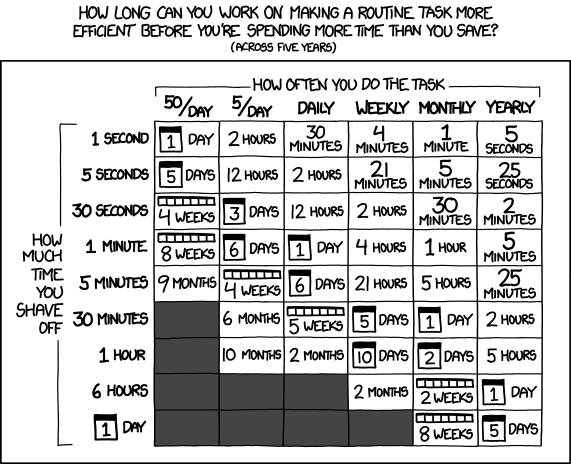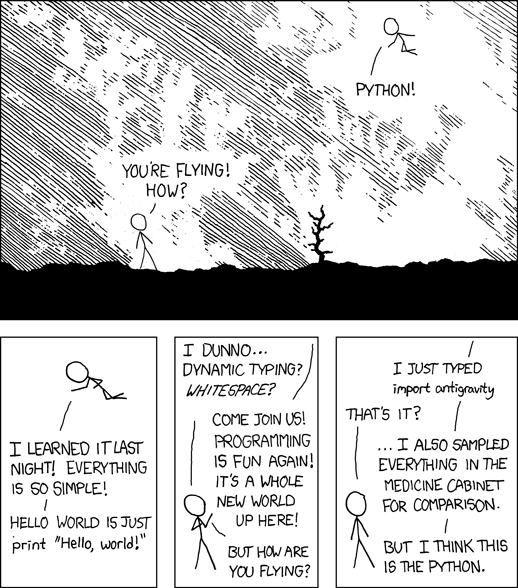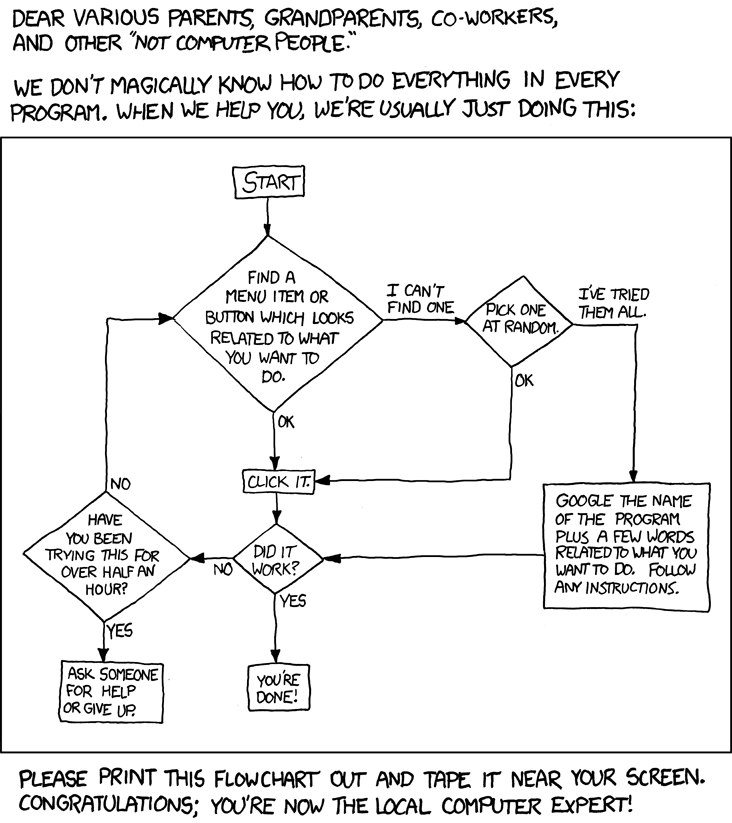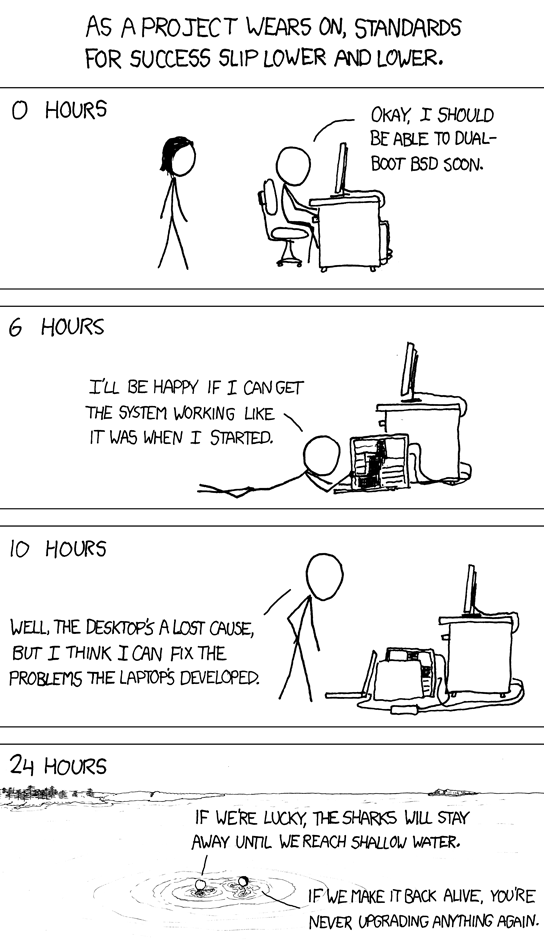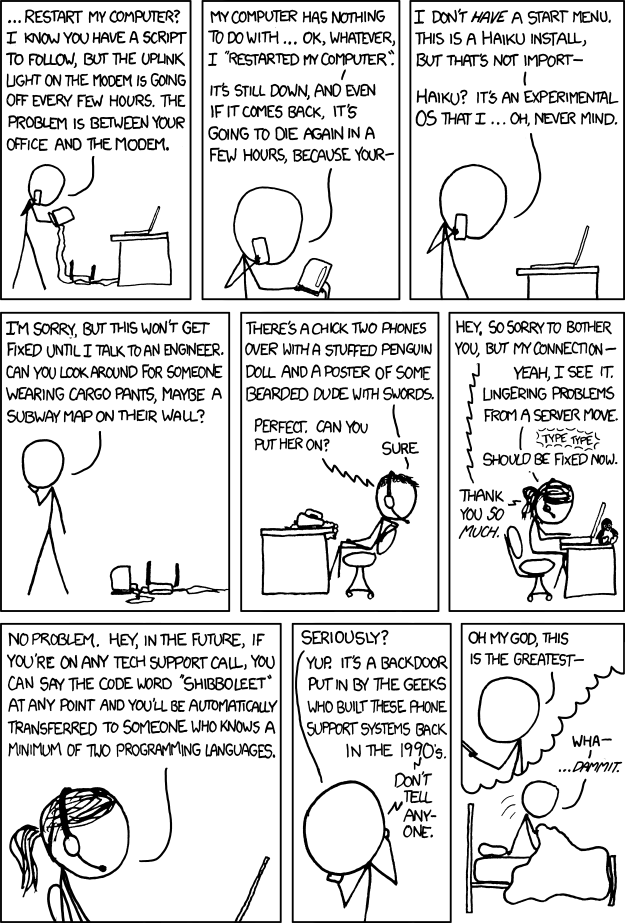Lesson 4: Scripting, Troubleshooting, & Workflow¶
Note
week 1, 1/9/2014 - log files - git bisect, git log, git blame - scientific method (small changes)
Agenda¶
- Scripting
- What’s a script?
- What’s a scripting language?
- Common scripting languages
- Bash & Python examples
- Troubleshooting
- Techniques
- Examples
- Workflow
- Life cycle of a bug
Scripting¶
What’s a scripting language?¶
Note
This is more programming language than scripting specific.
Compiled vs interpreted
- Expresses logic and actions
- Logic: loops, conditionals, statements
- Actions: File I/O, print to console, interact with system utilities
Common Scripting Languages¶
- Bash
- Python
- Language affects the speed of development and performance of a task
- Most tasks can be done using any language
Bash¶
- Adds a bit of logic to automate your shell commands
- Saves re-typing things
- Powered by the tools you invoke from the shell
- Scripts can be hard to read at first because they call to external utilities
Python¶
Why Python?¶
- Easy to read
- Easy to maintain
- Quick to write
- Lots of libraries
Troubleshooting¶
Informal method¶
Notice that something isn’t working right
- Identify what should be happening
- Define a success criterion (“it works if...”)
If it used to work¶
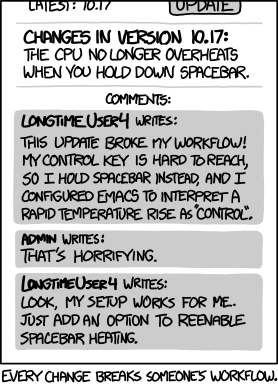
- Determine what changed
- Version control history (Git bisect)
- Emails from the system? Logs? (Check for cron jobs or config mgmt)
- Ask others who’ve been working on system
Use your own notes/documentation
If it’s never worked for you¶
Determine whether it’s possible at all
Find evidence of similar things working (code, blog posts, stackoverflow)
If there’s no evidence of anything like this working, you might be Doing It Wrong (tm)
- If there’s documentation of something similar working:
- Confirm that the docs are correct for the versions of things that you’re using
- If they docs are wrong, fix them
- If the docs appear right, figure out what differs between your code and the example
- If there’s sample code, make sure you can run it
- Your goal is minimum viable test case
After finding the problem¶
Did the docs tell you how to fix it?
If you can’t fix the problem, identify why not, and then fix that
- Ask for help
- Expert takes 5 minutes to answer a well-asked question
- Newbie can waste hours
Formal method¶
(from this)
- Identify the problem
- Establish a theory of probable cause (question the obvious)
- Test the theory to determine the cause
- Establish a plan of action to resolve the problem and implement the solution
- Verify full system functionality and, if applicable, implement preventative measures
- Document findings, actions, and outcomes
How to get help¶
- Don’t ask to ask
- Summarize what’s wrong
- Summarize what you’ve tried and why it hasn’t worked
- Make a specific request, politely
- Pick the right place & time to ask
Documentation¶
Man pages
Wikis
- Google (used wisely)
- Assessing sites’ applicability and reliability
- Who wrote it?
- When?
- Is the other content reliable?
- Is feedback from others visible? If so, what does it say?
Sources of trouble¶
| When using something new: | |
|---|---|
|
|
| When something previously working breaks: | |
|
|
Tickets¶
Ticket (often sysadmin) or Issue (often developer)
Ticket comes into tracking system, submitted by a user
- Triage
- Add details to tickets; consolidate duplicates
- Contact submitter if more info needed
- Add tags, milestones, priority, etc.
Ticket is assigned to someone, who fixes it
Someone else confirms that the fix works, then ticket is closed
Tickets vs. Issues¶
- Workflow defined by tracker system
- RT, Redmine, Chiliproject, GitHub issues, mailing lists
Issues/Bugs are developer work items which need to be included in a release of code
Tickets are sysadmin work items, often related to systems improvement or maintenance
Can’t log in because your account got reset: Ticket.
Can’t log in because the newest release of the software is incompatible with the old database format: Bug.
Some Examples¶
- Trac
- Chiliproject
- RT
- Bugzilla
